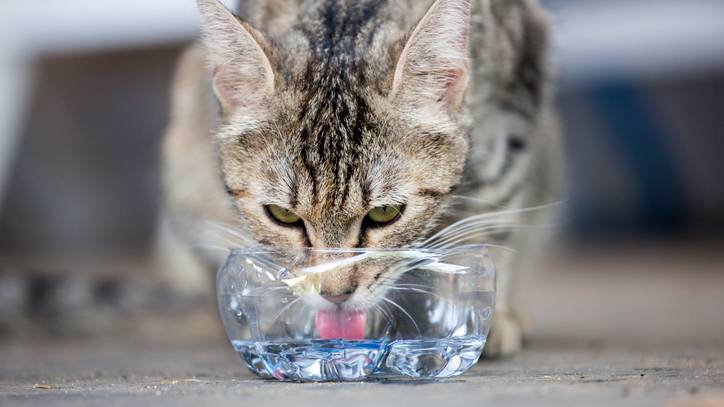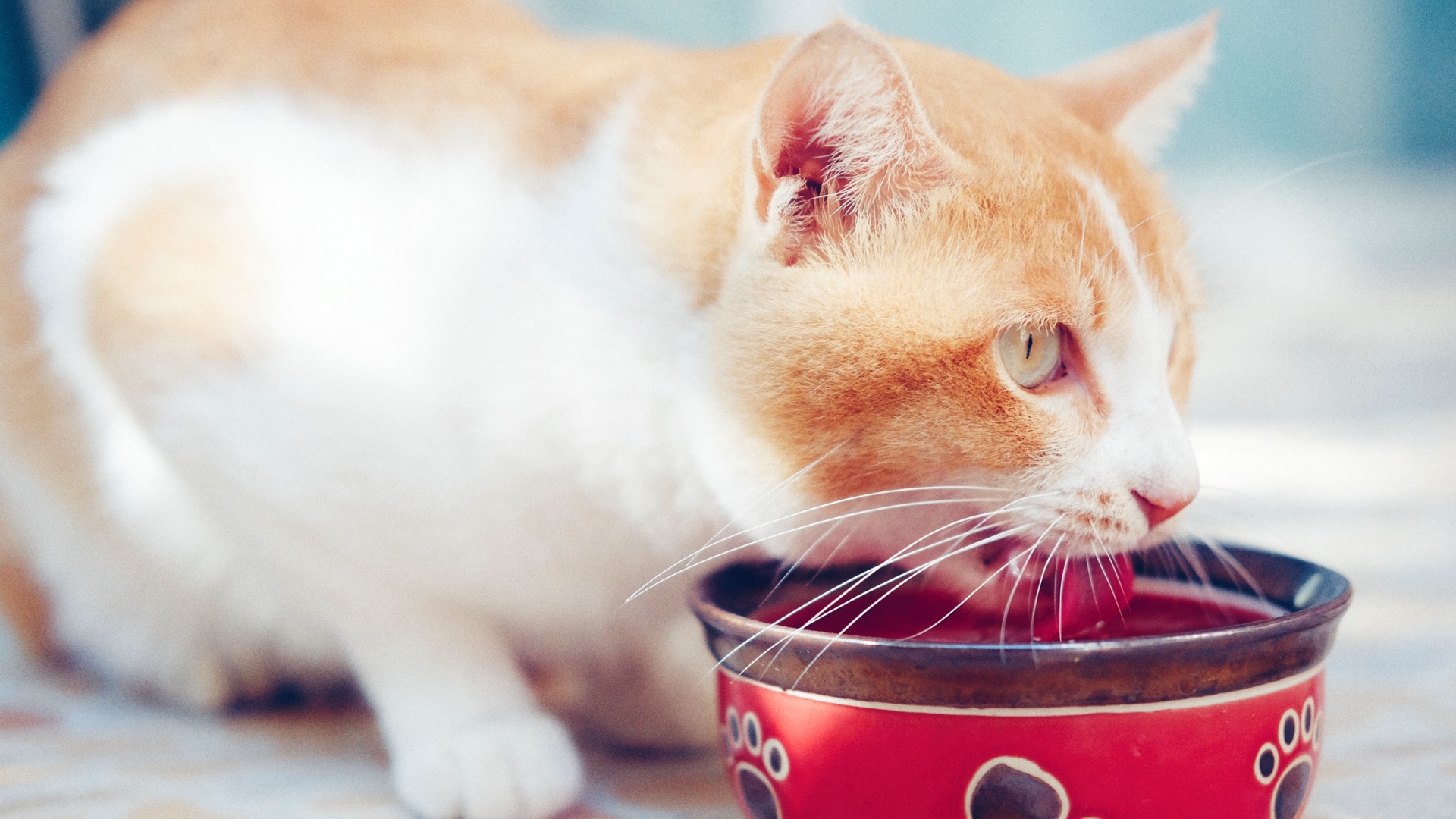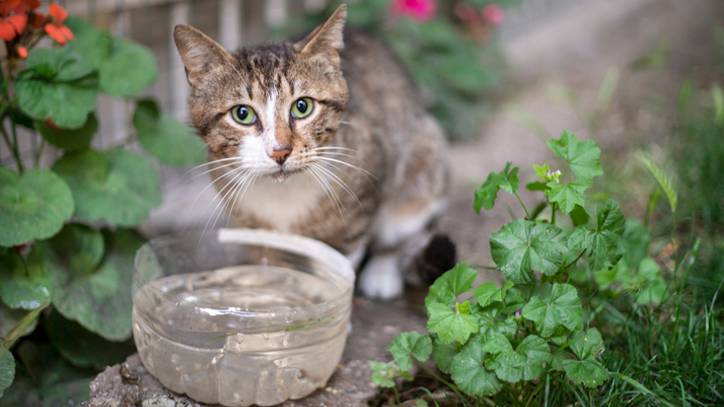
“It’s cystitis again,” my vet confirmed for the third time in nine months. I had begun to despair for my poor 10-year-old cat Jake, who just seemed to be prone to the uncomfortable condition. Not only had his frequent veterinary visits begun to create a dent in my wallet, but I hated to see him in pain. if I could I wanted to avoid the repeat buying of medication as the cost of owning a cat adds up when you factor in vet bills, food, and the very best cat toys for them.
His bouts of cystitis always quickly cleared up with medication, but it was time to figure out a way to prevent it from flaring up again and figure out a longer lasting solution. Thankfully, Dr Louisa Lane a Veterinary Medicine graduate and Recognised Advanced Practitioner in Small Animal Medicine, and Daniel Warren-Cummings a certified animal trainer and behaviorist helped me along the way. Their expert knowledge on handling cystitis in cats is shared throughout Jake's story below.
What is cystitis in cats?
Feline idiopathic cystitis (FIC) is common in cats and is an inflammation of the bladder. Though it is not typically serious, the exact cause is unknown. I spoke to veterinary surgeon and Recognised Advanced Practitioner in Small Animal Medicine, Dr Louisa Lane, to find out more. Louisa explained, “Cystitis, aka feline idiopathic cystitis (FIC) is very common in cats and accounts for approximately 75% of all the cases of lower urinary tract disease we see in cats.
“It isn’t specifically clear what causes cystitis although it is more common in cats who are fat, male, indoor, fed dry food, who don’t exercise, who live in a house with other cats (cats don’t really like other cats generally speaking) undergoing a stressful experience. Other theories include cats having a defective bladder lining.”
Jake is a slightly overweight male cat, and though he lives in a single-cat household, he tends to get anxious easily (anxiety in cats is more common than expected), particularly when other neighborhood cats pay a visit to his territory. Because of these factors, I knew that I needed to encourage him to drink more water in order to prevent another flare up.
As Lane explained, “Cats aren’t naturally driven to drink much water and so they produce very concentrated urine. In some way, we could speculate they are more predisposed to becoming dehydrated! Sometimes with certain health conditions we need our cats to drink more water.”
This is certainly true of Jake, although I provided him with fresh water, it was rare to catch him drinking. Thankfully though, there are several steps I took to increase his water intake — which really increased his drinking. Since then, he hasn’t had another case of cystitis, and these tips could be useful for anyone else dealing with a case of cat cystitis. Or perhaps you worry about your cat not keeping hydrated in summer and could benefit from some extra tips on how to cool down a cat in hot weather.
Four ways I got my cat to drink more water

1. Leave water around the house
One thing’s for sure — cats are fussy creatures! While you might be happy to go and get your water from the kitchen tap, your pampered kitty prefers to have options. By offering water in several different locations around the house, they can take their pick. It allows your cat to have a drink whenever they fancy, without having to go and find one specific bowl.
I noticed that Jake likes to drink from puddles, so I started putting a water bowl outside for him as well. This location seems to be one of his favorites and means he doesn’t have to come all the way back inside mid-adventure.
2. Try different bowls (including your cup!)
I don’t know about you, but my cat just loves to drink from my cup. If I leave a glass of water unattended for even a moment, I come back to find his head in it — lapping it up furiously. While he enjoys inconveniencing me, and claiming my cups as his own, I see this as a good thing — at least he’s staying hydrated! I’ve used this to my advantage, purposely leaving ‘my’ cups of water around for him to steal.
I spoke to Cats Protection animal behaviorist Daniel Warren-Cummings to find out more about why this can happen, and he explained, “In some instances, the material of the bowl can affect your cat drinking with plastic and metal thought to taint the taste of the water more than a ceramic bowl, for example. Experiment with different bowls to see if your cat has a preference.”
Maybe you have a favorite mug or glass to drink out of, so you know what this feels like. Try out different materials, and see which type your cat enjoys the most.
Daniel also shared that sometimes the sensory aspect of drinking can be a problem for cats, including whether your cat wears a bell. He said, “On a similar note, if you have a collar on your cat that has a metal tag or bell and this clangs on the bowl when they drink, this can often be a deterrent.”
For some cats, the sensation of their whiskers pressing against the bowl can be off putting. Their whiskers are incredibly sensitive, and it can be uncomfortable putting their face against small or narrow bowls. If this is the case for your cat, consider getting a wider bowl, or one of the best pet water fountains for them to drink from.
3. Wonderful water fountains

That leads us nicely to the most effective way I’ve encouraged Jake to drink more water. At the vet’s recommendation, I brought a cat drinking fountain, and since then, Jake can often be found lapping from it. For some cats, moving water is far more appealing, as both Daniel and Louisa confirmed. Daniel said, “Some cats prefer moving water and there are many fountain’ drinking containers available on the market for cats.” Jake particularly likes drinking from the top of the fountain, where he can sit up straight, and doesn’t have to get his whiskers anywhere near the fountain.
If you don’t have access to a cat drinking fountain, some cats also enjoy drinking from a running tap — although it’s important to make sure these are not constantly running, so you don’t waste water.
4. Tempt their taste buds
Cats might not be so keen on drinking, but if one thing’s for sure, it’s that they love eating. You can lean into this when encouraging your cat to stay hydrated. For cats prone to cystitis, the best wet cat food is better than dry food. On particularly hot days, adding a little extra water to the food bowl can encourage even the most stubborn cat to hydrate.
You could also consider freezing some stock, like chicken or fish, to add to their water bowl, making it even more tempting.
Louisa shared a tip, “There are even hydration supplements available now which I think work wonders.” Though I haven’t tried these with Jake yet, it could be worth consulting with your vet as to whether this could be an option for your cat.
Looking for ways to give your fur friend's mental and physical health a boost? Our guide to fun cat enrichment ideas has got you covered.







